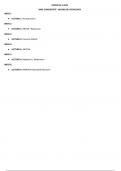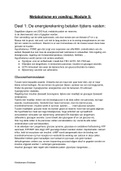Samenvatting
Summary Statistics 3 Lectures
- Vak
- (P_BSTAT3KL)
- Instelling
- Vrije Universiteit Amsterdam (VU)
Statistics 3 Lectures LECTURE 1: Recapitulation LECTURE 2: ANOVA / Regression LECTURE 3: Factorial ANOVA LECTURE 4: ANCOVA LECTURE 4: Mediation / Moderation LECTURE 6: MANOVA/ Repeated Measures
[Meer zien]














